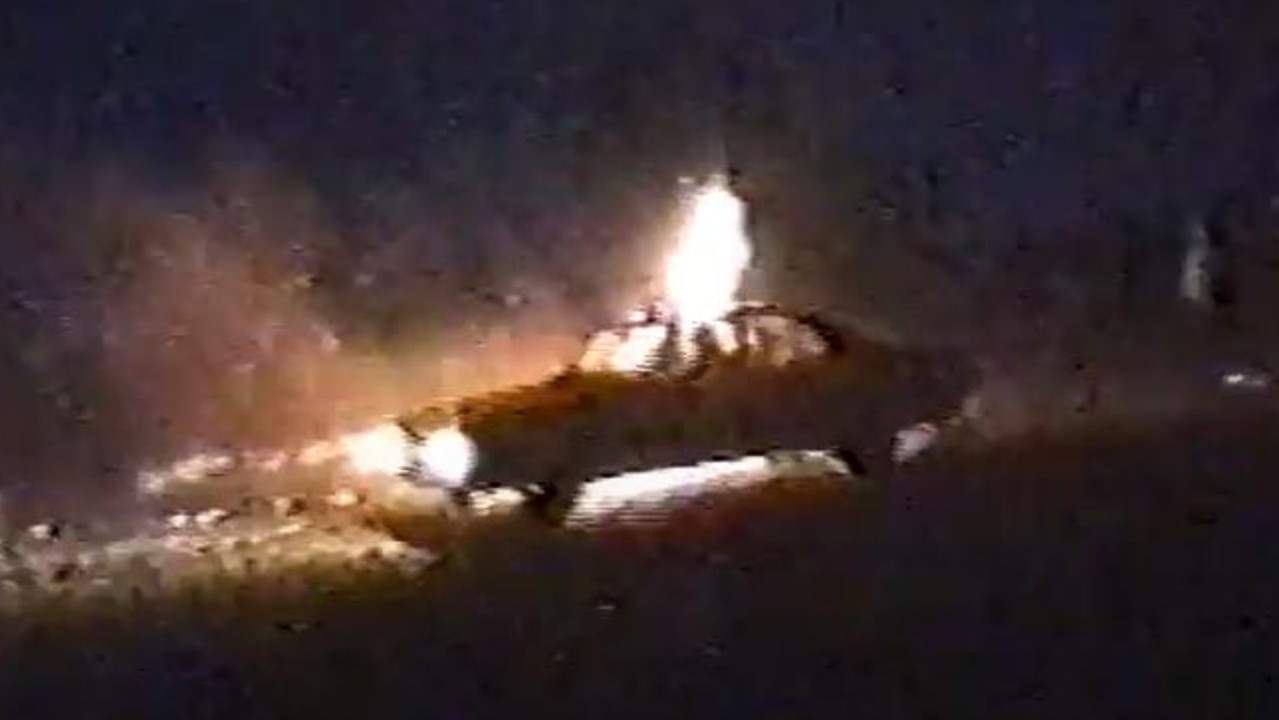High times in the Blue Mountains
TRYING not to scream, Crystal Ja takes in the stunning panoramas of the Blue Mountains while awkwardly dangling, breathless, at the end of a rope.
IT takes forever to hit the water.
I had obeyed instructions by throwing myself backwards into canyon waters several metres below, with nothing to save me but a backpack that supposedly moonlights as a floating device.
"I can't swim, I can't swim, I can't swim," were the words that should have been racing through my mind, but instead I was bracing myself, agonisingly, for the moment of impact.
It took forever.
Really it took about one second, but what's one second when you're throwing yourself into an abyss of deep, dark water a good 20 minutes from the closest realm of civilisation and the Blue Mountains hospital? And you can't swim?
My life flashed before me.
But when it finally happened, and even though it took me a good three seconds to battle to the surface in spite of the floating backpack, it wasn't as bad as I expected.
In fact, despite the icy cold and my feeble spluttering for air, it was exhilarating, which is probably why this half-day canyoning adventure is one of the Blue Mountains' most popular tours.
Abseil down a waterfall
This jump, the first of many in the Empress Canyon, is probably the tamest of them all, considering the next one comes with the instructions: "Make sure you jump at least 1.5 metres ahead ... or you'll land on that rock."
High-n-Wild is one of the busiest adventure companies in the area and takes an assortment of backpackers, local adventurous and tourists through the canyon almost every day.
Lee, who is the only fulltime adventure guide doing this sort of thing in the Blue Mountains, reassured me that his clientele largely consists of beginners who have had little adventuring experience.
Annoyingly, the only other people in our small group – a backpacking German couple and student Mike from New York – have all had prior experience and laughed at me during the morning's abseiling training.
The abseiling is essential considering the Empress Canyon's grand finale consists of a 30-metre abseil down a waterfall.
Lee told us that the stunning water feature flows every day without fail despite NSW's on-going drought.
Starting with a five-metre abseil, we learn the basic rules which include an ABC-style safety checklist and the low-down on why not to look up when rocks are falling on you (because then they'll fall on your face, not on your helmet).
Zooming down the cliff face
The proceeding 15-metre and 30-metre abseil were amazing opportunities to scope the scenery.
While my buddies zoomed down the cliff faces, I had ample time to look at the view – gorgeous mountain panoramas and heritage-listed landscapes – while awkwardly dangling, breathless, at the end of a rope.
After lunch, there's a 15-minute scenic walk down to the canyon.
For some, the various jumps and swims in the canyon are part of its attraction.
After floundering in the water after that first jump and trying to paddle myself in the direction of the group, Lee, embarrassingly, had to grab my collar and haul me – dog-like – to the next rock.
He suggested I focus on the scenery.
The canyon itself is a stunning example of the Blue Mountains' natural beauty.
With rocks rising 10 metres above us, they sometimes closed out the light and where they didn't, bush and shrubbery on top of them filtered the sun's rays.
At points, the canyon was narrow enough to be able to touch either side with your arms, in others it expanded out so far as to have its own two-metre long beach right in the middle of the canyon.
One couple even got married there.
Remember not to look up
More jumps, yabbie-spotting and even a rocky waterslide later, we came to the final waterfall. Abseiling in the wet isn't as tricky as it sounds, although the water did manage to reduce us all to our knees as the slippery rocks made for unsteady feet.
Cruising down the face of the waterfall with a cascade of water hitting you from above (remember not to look up) was even more fun than it looked, and bushwalkers on the boardwalk below us stopped to watch our progress.
The last 10 metres were a free-fall, but this time I hit the water gracefully, gently lowering myself into the depths and letting my backpack do the work for me.
By this time I had also learned how to effectively move my arms and legs in the water and even did something akin to swimming in the final few metres.
Abseiling, canyoning, swimming and only four scraped knuckles?
Who's laughing now?



